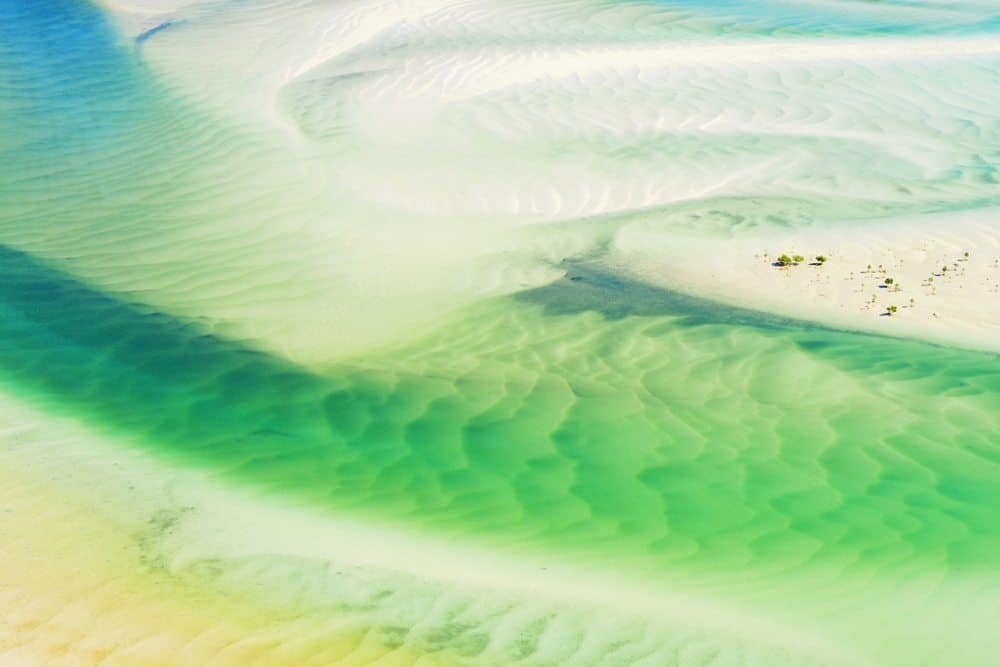
Showcasing the world from above opens up a new perspective of natural patterns and colours. When it comes to coastlines and in particular beaches you’ve got glistening water, shining sand and views that you would never see from the ground just waiting to be photographed.
Whether you’re climbing a mountain or flying in a helicopter it’s important to have the correct settings when working with a bright canvas like sand.
On a sunny day you’ll need to be careful of your exposure compensation to ensure the sand isn’t blown out and white. This can be very hard to correct later with editing as most of the detail will be lost!
When you’re taking photos from above in strong sunlight it’s best to take a few test shots to see what your camera is seeing.
If the image is looking a little too much like a teeth whitening commercial, tone it down a notch by adjusting your ISO and exposure levels.
Also be sure to keep an eye out for shadows within the landscape, always focus on the brightest part of the scene so your camera.
I like to start with a standard bunch of settings and then work from there depending on the light conditions.
My standard sand/beach settings are:
ISO: 100 or 400 (if you’re in a moving helicopter/plane)
Aperture: f/3.5
Exposure time: 1/500th
Exposure Compensation: +0.7
Take a peek below at some example images, the settings used are noted in the captions.
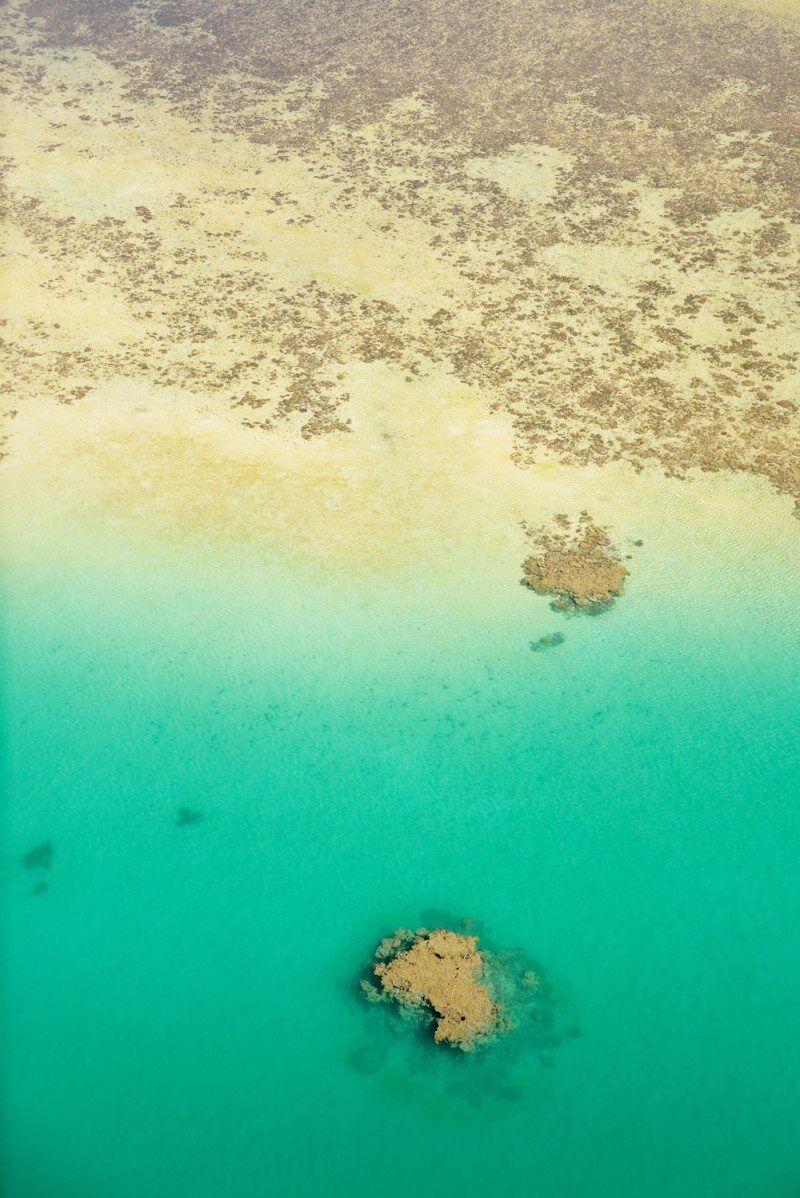
Aerial Image: Settings Used – f/4.5, ISO 640, 1/4000, 0 step exp, Focal Length 50mm.
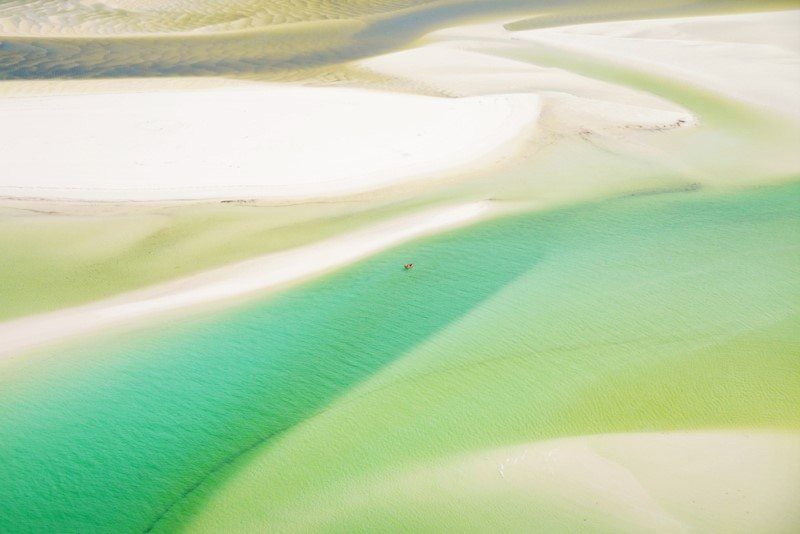
Aerial Beach Photo: Settings Used – ISO 640, F/4.5, 1/6400 sec, 0 step exposure, Focal Length 52mm.
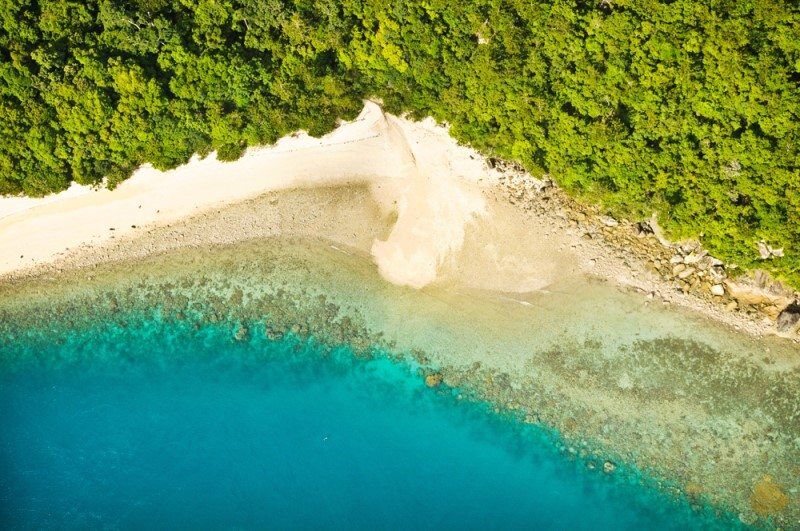
Aerial Coastal Landscape: Settings Used – ISO 400, f/10, 1/400sec, +0.3 exposure, focal length 42mm.
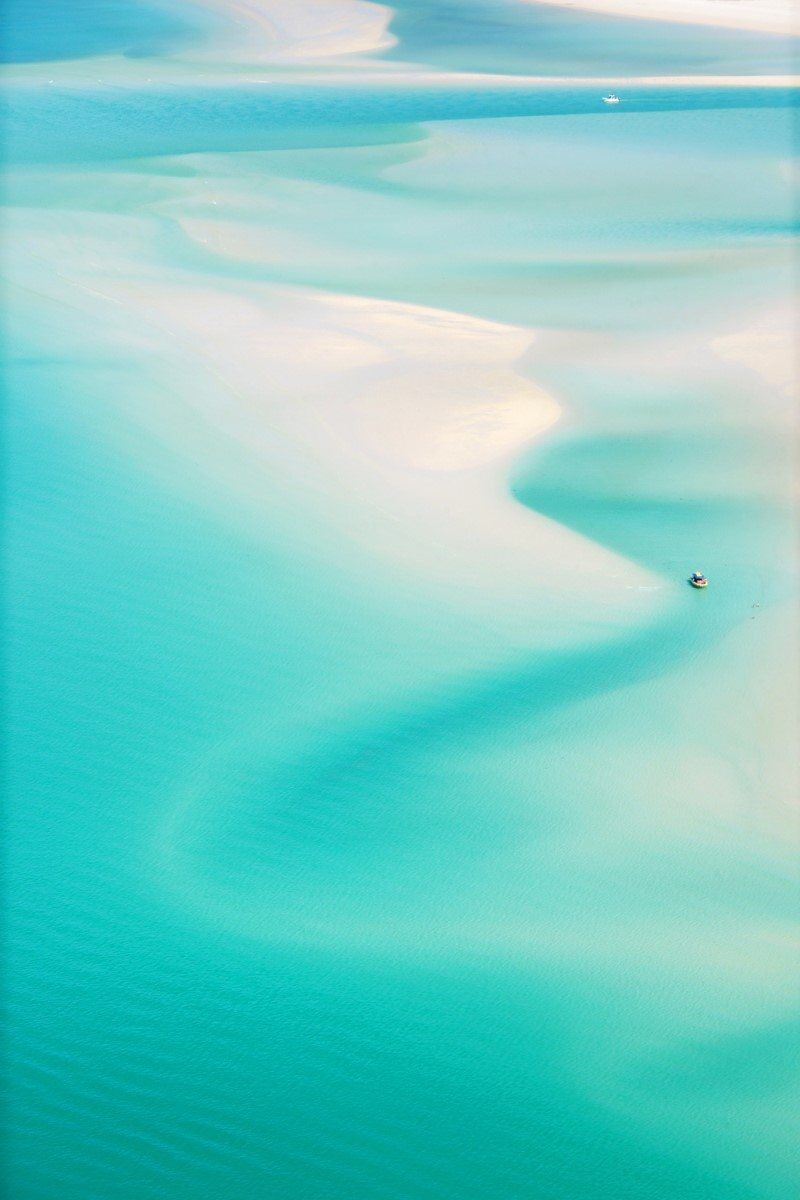
Aerial Beach Photo: Settings Used – ISO 500, f/11, 1/500 sec, +0.7 exposure, focal length 145mm.
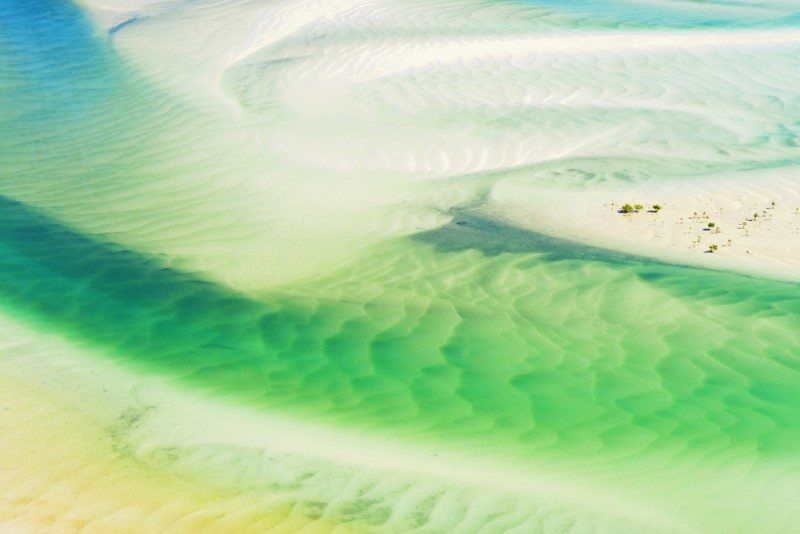
Settings Used: ISO 500, f/10, 1/400 sec, +0.3 exposure, focal length 72mm.
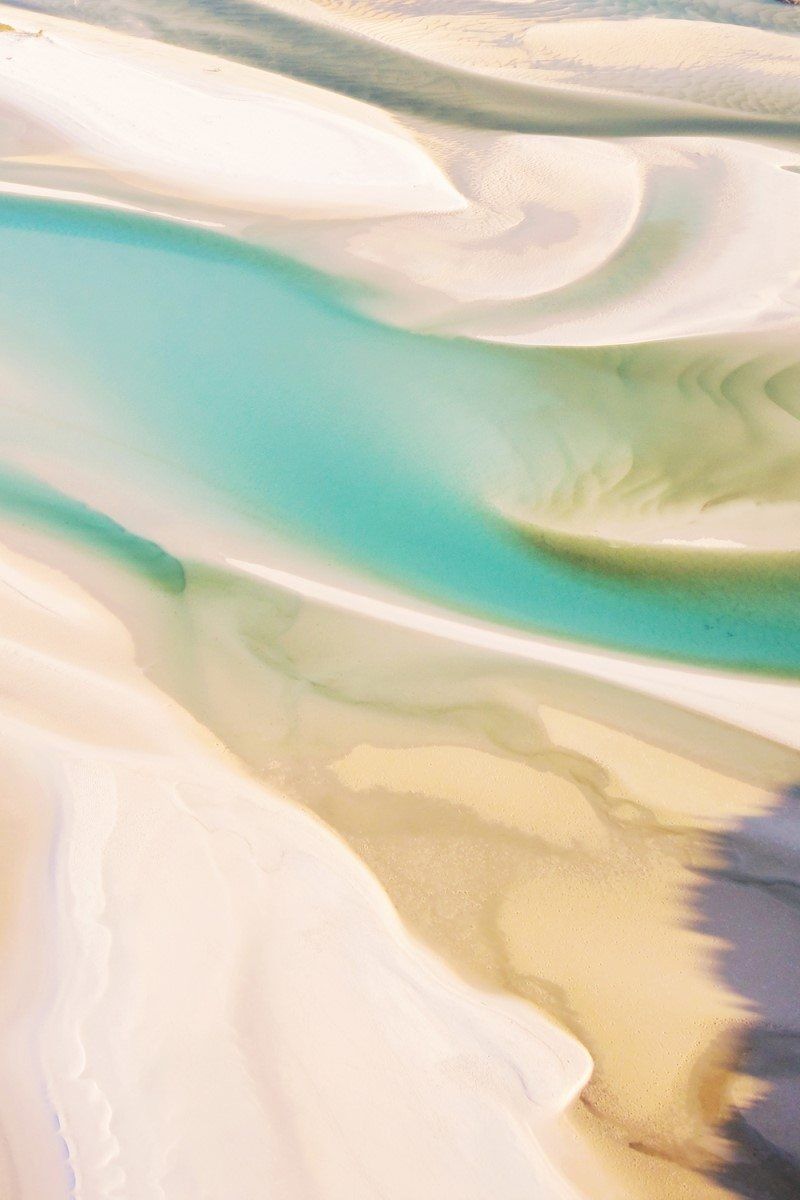
Settings Used: ISO 640, f/3.5, 1/2000 sec, +0.7 exposure, focal length 28mm. This image is photographed at a faster speed because it’s from a moving helicopter.
If you’ve got a great beach photo, share it via Instagram with the hashtag #thewanderinglens

Hello! I’m the founder and photographer behind The Wandering Lens.
With 19+yrs experience as a professional travel and landscape photographer, all advice found on this site is from my personal experience, or that of contributors, on the road. I hope it’s useful for your own travels and would love to hear in the comments about your trips and experiences around the world.

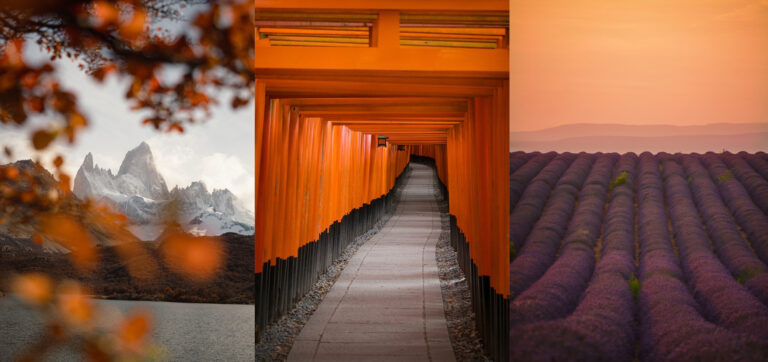
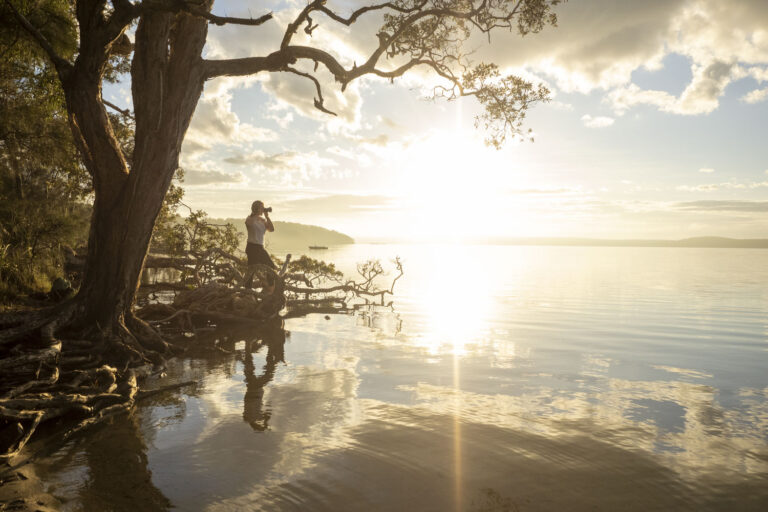
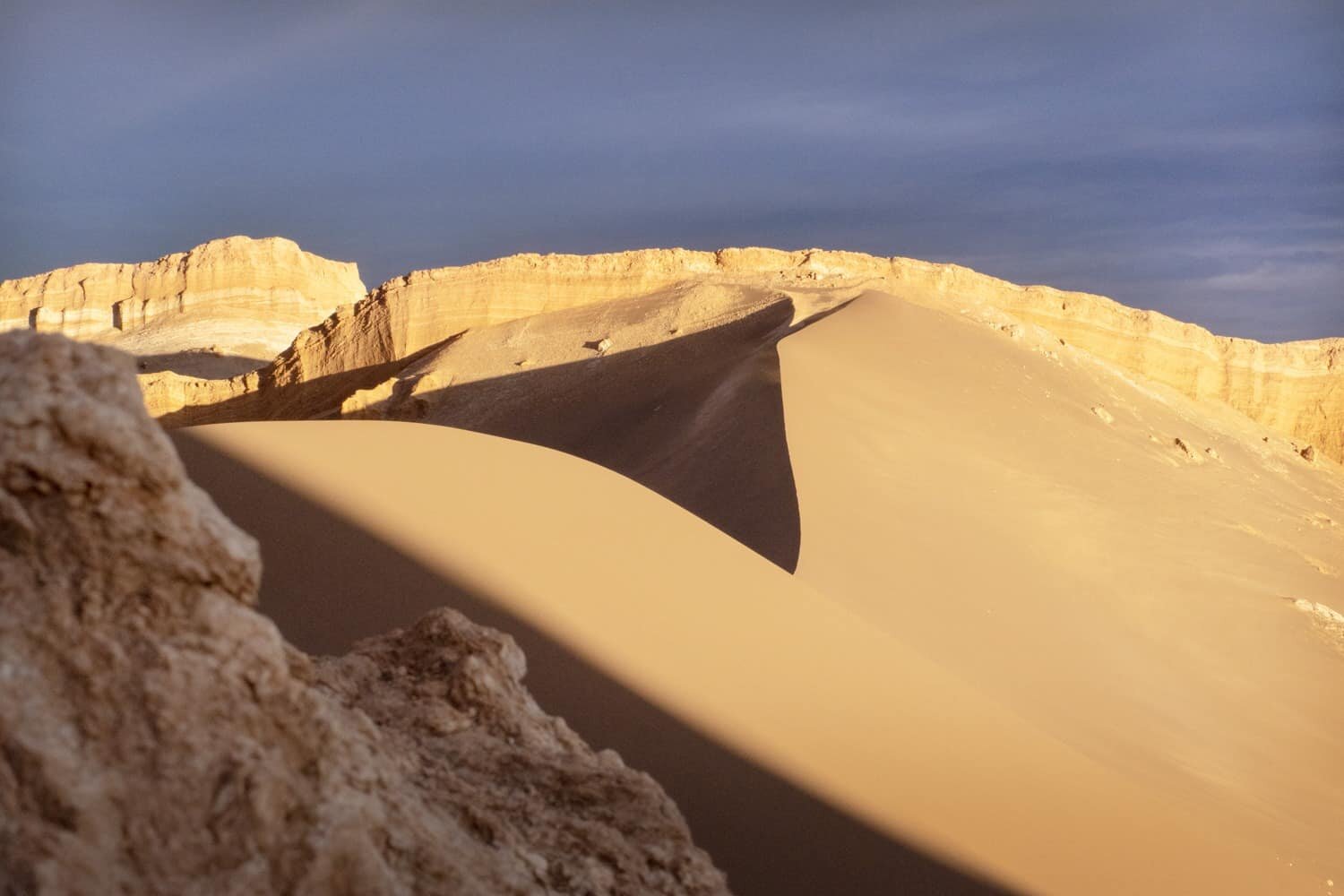
Blog Comments
rajasthan tour operator
March 12, 2016 at 6:27 am
Amazing pictures, thanks for sharing the camera angle and other information about the camera settings.
Bev Brewer
March 19, 2016 at 4:36 pm
Stunning photos – some that look like abstract paintings – so beautiful. I’d be interested to know where these photos were taken. I like to spend my time on my sailboat the Bahamas. The colors of the water in your photos remind me of the Exumas. I’m inspired by your photos. Thanks for sharing them.
thewanderinglens
March 20, 2016 at 10:56 am
Thanks so much Bev! I dream of visiting the Bahamas, in particular the Exumas for the swimming pigs! The majority of this collection of photos were taken in the Whitsunday Islands in the Great Barrier Reef, Australia. A great place for sailing too!
Uganda Safaris
May 25, 2016 at 10:34 am
Love these photos and your article. Last time i took aeriel photos was in the afternoon and there wasn’t much sunshine on that day so i captured real cool photos. You are right, theres nothing like aerial photography, you get the whole picture…..
thewanderinglens
June 6, 2016 at 1:42 pm
Thanks so much! Great to hear you’re on board with aerial photos…it’s so fun to see the world from a different perspective!
Marie
June 14, 2016 at 4:44 pm
Wow, these photos are so amazing! #inspired 🙂
thewanderinglens
June 14, 2016 at 9:27 pm
Thanks Marie, lovely to hear!
Kym
September 20, 2016 at 1:45 pm
Thanks for a great article! Aerial photography is next on my list! Just a quick question about lenses. I use Canon gear and have a 24-105mm lens, 70-200mm and I am looking at purchasing a 17-40mm. Which lens would you consider to be the best to take on a flight? Not sure I could handle changing lenses with the door off the helicopter! 🙂
thewanderinglens
October 4, 2016 at 11:31 am
Hi Kym, exciting to hear you’re getting into aerial photography. I typically take up two cameras each with a different lens to avoid changing lenses with the door off…an accident waiting to happen with my clumsiness! If you just want the one camera up there the best would be to think about what shots you’re hoping to capture…are you looking for detail shots (in which case your 70-200mm) would suit or wide aerials taking in all that’s below. I rarely take up my 14-24mm lens in a helicopter because it’s far too wide to capture much detail. The 24-105mm could be a great choice 🙂
Alice Genoh
January 3, 2017 at 4:21 pm
Hey, the pictures you have shown in your blog are just amazingly superb. My elder son is fond of photography and this information will be quite helpful for him to learn more about it. Thanks for sharing this and keep up the good work.
thewanderinglens
May 12, 2017 at 11:25 pm
Hi Alice, sorry I only just saw your comment here! Thanks so much for your lovely words, so great to hear my site was helpful 🙂
Minash Hoyet
May 11, 2017 at 10:54 pm
Love these… I appreciate your share.